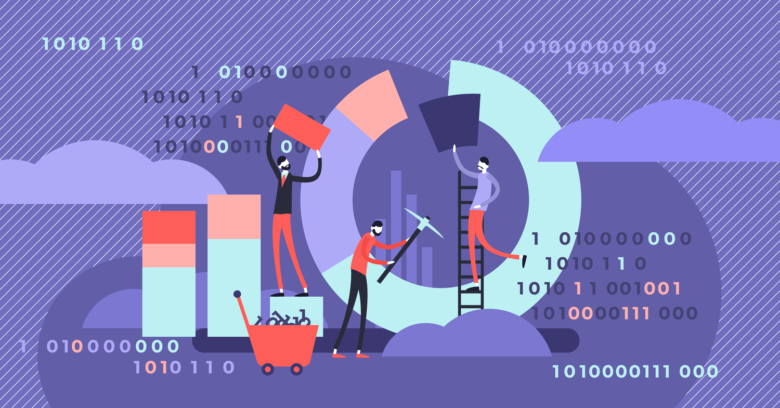Although it is thought to have entered our lives with Satoshi Nakamoto in 2008, the origin of blockchain technology goes back several decades. Many attempts were made in the early 1990s, but no blockchain technology was as effective as Bitcoin, the first teardown. What made Bitcoin so successful was the definition of the blockchain system that worked effectively for the first time, which Satoshi described in his white paper. Satoshi’s white paper describes proof-of-work as well as mathematical proofs of how transactions can be recorded on a chain.
KEY TAKEAWAYS:
- Blockchain technology has been developed in many different forms for 30 years until it got its current version.
- In the late 80s, some blockchain projects were launched in the United States for science and in the Netherlands to protect money carriers.
- Stuart Haber and W. Scott Stornetta are scientists who ignited blockchain technology as it is known.
- In 2008, Satoshi Nakamoto published a white paper on P2P technology and Bitcoin.
Table of Contents
Set The Clocks Back: The History Of Blockchain
Set your watch to the end of the 80s; we’re going to explain a story by Forbes. Meet the Bell laboratory on the West Side, which is focused on scientific studies. This lab is also where Stornetta, a scientist, and Haber, a cryptographer, work on open projects to prevent possible data manipulation in science.
The two like-minded scientists dreamed of a structure where no manager would be involved as long as the problem was clearly stated and where all the bright-minded people in the world could share their ideas. In this way, more than one science discipline could come together, and studies could be carried out more effectively. At the same time, this structure had to offer a solution to the immutability of digital documents.
One of the First Block Attempts in the late ’80s
First, they reduced a document to a hash by producing a solution based on hash functions and digital certificates. A hash is a fixed-length result obtained from documents with a maximum length of a few bytes, a term well known in the world of cryptography. Since the constancy of the number value is based on many documents, the hash changes whenever the bit of a document changes, which means the hash and the documents are irreversibly linked together.
Anyone intending to validate the document requires a hash to validate it through Timestamp Service (TSS) that will time-stamp the hash. In this way, anyone who wants to be included in the document is linked to each other via hashes. So a chained document emerges. How familiar is that? In fact, the work of Stornetta and Haber has the same logic as the blockchain as we know it today. But it’s a little older.
Netherland’s Turn for Blockchain Attempts
One of the earliest blockchain attempts took place in the Netherlands before Bitcoin was even mentioned, according to a report by Bitcoinmagazine. About 20 years ago, gas stations in the Netherlands were so damaged by thefts during night shifts that they decided to find a solution for it. Instead of live-in-flesh guards, developers designed a smartcard linked to money. Thus, truck drivers were able to access stations without risking their lives by not carrying any cash thanks to these smartcards. This first digital currency design, which was ignited in the Netherlands, also laid the foundations of the new technology that entered our lives as digital currency today.
David Chaum and One of the First P2P Attempts
David Chaum certainly deserves the name “pioneer” in cryptography and computer science.
So on what basis do we say this?
Well, if you didn’t know, David Chaum is credited as the inventor of the first electronic cash technology in the world. It was 1983 when the American cryptographer came up with the idea of money that could be taken “digitally” from banks and spent in an untraceable way. That same year, Chaum was also busy developing a formula known as a “blind-signature” that allows a transaction to be publicly verified.
The purpose of Chaum’s research was to allow transactions between individuals that are completely private and based on peer-to-peer logic. Not satisfied with just formulas, Chaum launched a company called DigiCash, which will announce the first digital currency, eCash. Although the company went bankrupt in the late 90s, the ideas developed by Chaum and his company for the crypto world are very important to the crypto world today.
The Blockchain as We Know Today: Stuart Haber and W. Scott Stornetta
The invention of the blockchain as we know it today was made in 1991 by Stuart Haber and W. Scott Stornetta, exactly 17 years before Bitcoin entered our lives. In their study published in 1991, two researchers conceptualized the idea of linking blocks cryptographically.
The paper was all about time-stamping documents that contain hash values within a block on the blockchain so that the documents become notarized. Therefore, anyone can verify that a document existed at a specific time in a specific version. As a result, digital documents could not be backdated or tampered with.
A year later, Bayer, Haber, and Stornetta integrated Merkle trees into the design, allowing several documents to be collected in a block, which led the system to work more effectively. However, this technology was put aside, and its patent expired in 2004.
2004: Reusable Proof-of-Work
In 2004, the milestone development pioneered the invention of Bitcoin in 2008 and served as a prototype. Hal Finney, a computer scientist, described the reusable proof-of-work system (RPoW), which solved the double-spending problem by enabling users to verify the integrity and validity of the data, regardless of token ownership.
2008: The Bitcoin Network
In 2008, a white paper by Satoshi Nakamoto describing a decentralized peer-to-peer electronic cash system was released. Still, it is unknown who Satoshi Nakamoto is; it could be a person or group using the pseudonym.
The system named Bitcoin depends on the Hashcash proof of work algorithm. Thanks to the Bitcoin system, double spending was solved through a decentralized peer-to-peer protocol, where each transaction can be tracked and verified. One can acquire a Bitcoin through a reward by verifying the decentralized nodes in the network. The first 50 “mined” Bitcoins were rewarded to Satoshi Nakamoto, and the first transaction took place on 12 January 2009, when Hal Finney received 100 bitcoins from Satoshi Nakamoto.
What is blockchain?
A blockchain is a list of records whose blocks are linked and secured using cryptography, containing transaction data, a cryptographic hash function of the previous block, and a time-stamp.
What is a block in blockchain?
Blocks contain valid transactions, hashed and encoded into a Merkle tree. Each block holds the cryptographic hash of the previous block on the blockchain. The linked blocks come together and become a “blockchain.”
How are transactions recorded on a blockchain?
During each transfer on a blockchain, transaction inputs and transaction outputs are stored in encrypted and inaccessible blockchain-powered ledgers. Thus, other people can monitor the transfer transactions made completely transparently.
What is double-spending in the blockchain?
Double-spending is the name given to the risk that a cryptocurrency can be spent more than one way.
How can double-spending happen?
Transaction data contained by a blockchain can be manipulated under specific conditions, which enable modified blocks to be accepted by the blockchain. Once this happens, the person that leads the modification can reclaim spent coins.
Has double-spending ever happened?
It is known that there were several double-spending attempts, but all attempts were stopped.
Can Bitcoin be copied?
A Bitcoin cannot be copied since the consensus within the blockchain would not grant approval for it.
What are some benefits of blockchain technology?
Blockchain technology allows a more trusted data coordination through consensus, transparent transactions, attack resistance, and tokenization.
What are 51% attacks?
51% attacks are one of the most disadvantageous for blockchain. When 51% of the hashing power is in the hands of a person or group, the blockchain can be manipulated at will. 51% attacks that are possible in theory, there is no successful attack so far.







